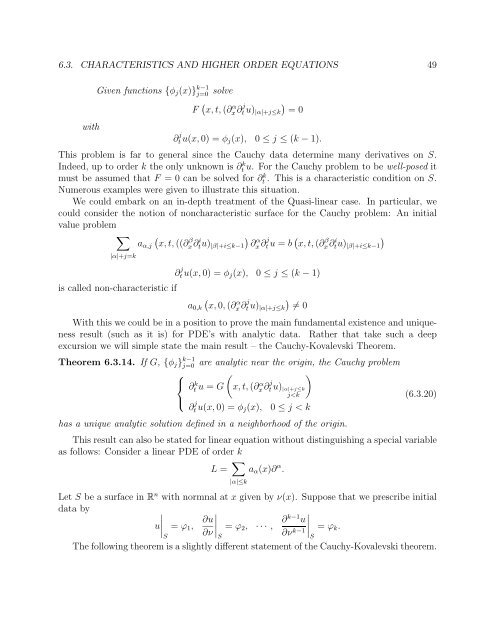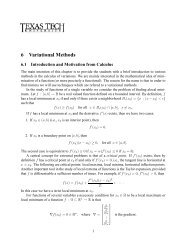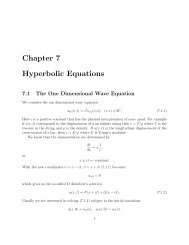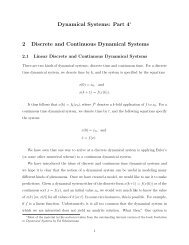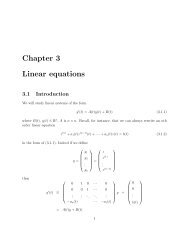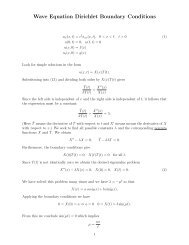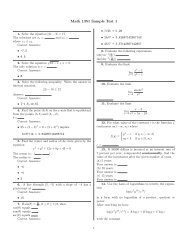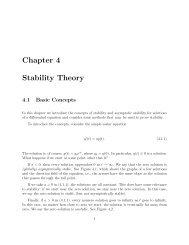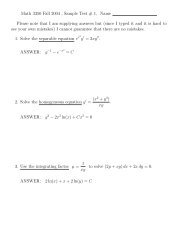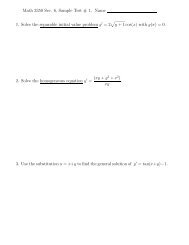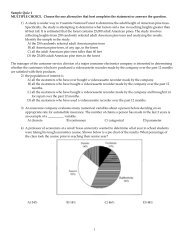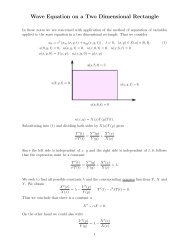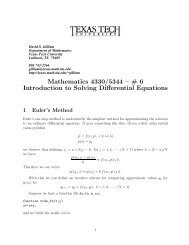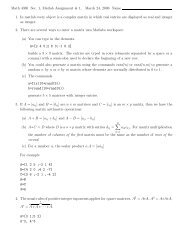Chapter 6 Partial Differential Equations
Chapter 6 Partial Differential Equations
Chapter 6 Partial Differential Equations
Create successful ePaper yourself
Turn your PDF publications into a flip-book with our unique Google optimized e-Paper software.
6.3. CHARACTERISTICS AND HIGHER ORDER EQUATIONS 49<br />
Given functions {φ j (x)} k−1<br />
j=0 solve<br />
F ( x, t, (∂ α x ∂ j t u) |α|+j≤k<br />
)<br />
=0<br />
with<br />
∂ j t u(x, 0) = φ j (x), 0 ≤ j ≤ (k − 1).<br />
This problem is far to general since the Cauchy data determine many derivatives on S.<br />
Indeed, up to order k the only unknown is ∂t k u. For the Cauchy problem to be well-posed it<br />
must be assumed that F = 0 can be solved for ∂t k . This is a characteristic condition on S.<br />
Numerous examples were given to illustrate this situation.<br />
We could embark on an in-depth treatment of the Quasi-linear case. In particular, we<br />
could consider the notion of noncharacteristic surface for the Cauchy problem: An initial<br />
value problem<br />
∑ ( )<br />
a α,j x, t, ((∂<br />
β<br />
x ∂tu) i |β|+i≤k−1 ∂<br />
α<br />
x ∂ j t u = b ( )<br />
x, t, (∂x β ∂tu) i |β|+i≤k−1<br />
|α|+j=k<br />
∂ j t u(x, 0) = φ j (x), 0 ≤ j ≤ (k − 1)<br />
is called non-characteristic if<br />
a 0,k<br />
(<br />
x, 0, (∂<br />
α<br />
x ∂ j t u) |α|+j≤k<br />
)<br />
≠0<br />
With this we could be in a position to prove the main fundamental existence and uniqueness<br />
result (such as it is) for PDE’s with analytic data. Rather that take such a deep<br />
excursion we will simple state the main result – the Cauchy-Kovalevski Theorem.<br />
Theorem 6.3.14. If G, {φ j } k−1<br />
j=0 are analytic near the origin, the Cauchy problem<br />
⎧ (<br />
)<br />
⎨ ∂t k u = G x, t, (∂x α ∂ j t u) |α|+j≤k<br />
j


